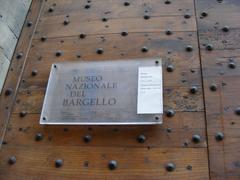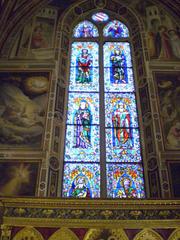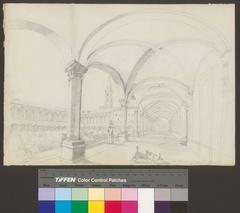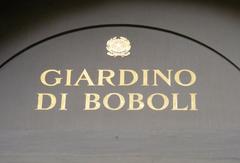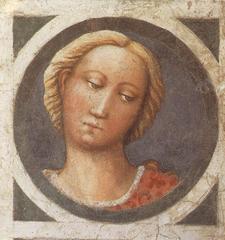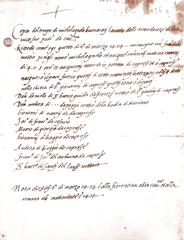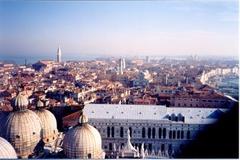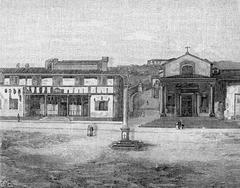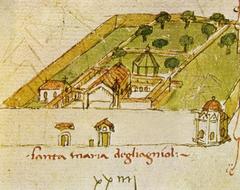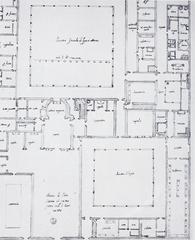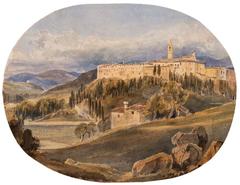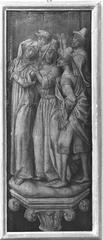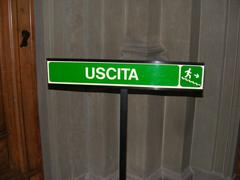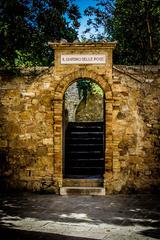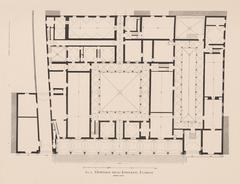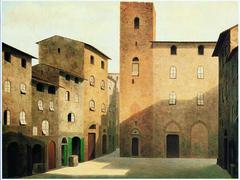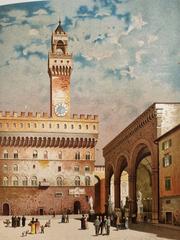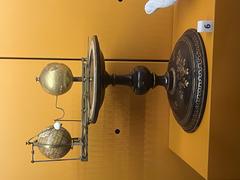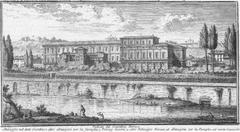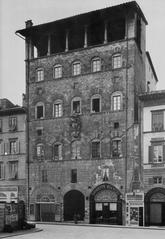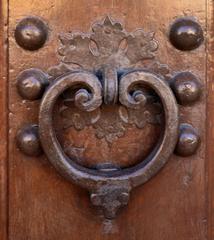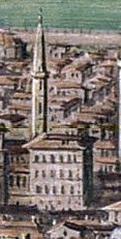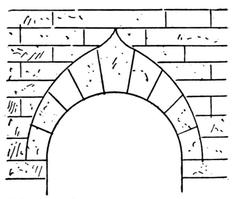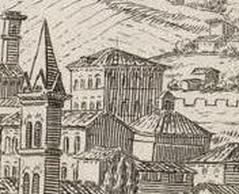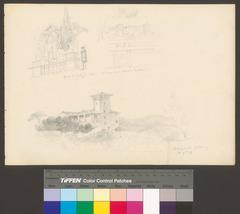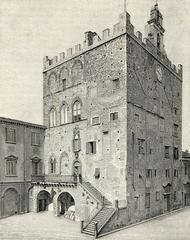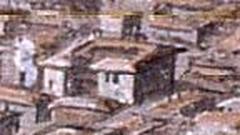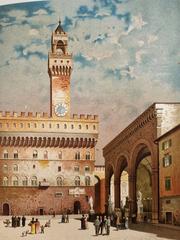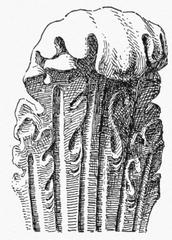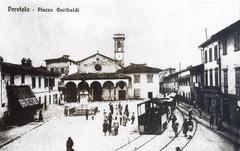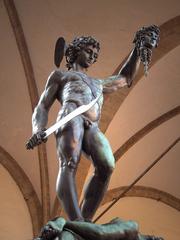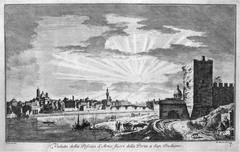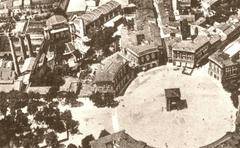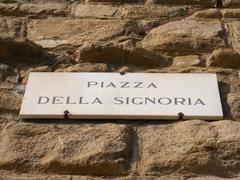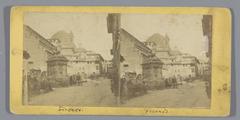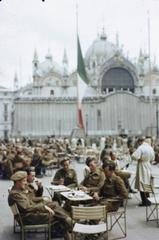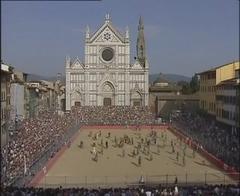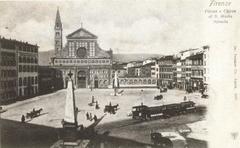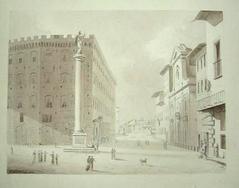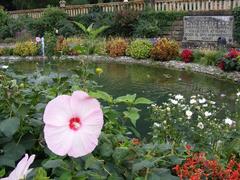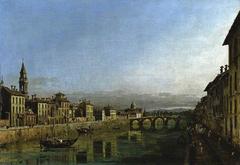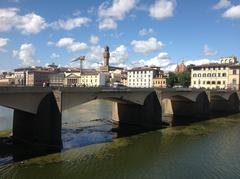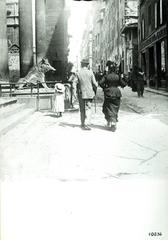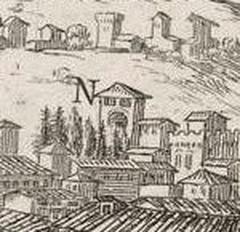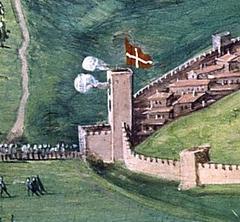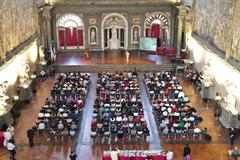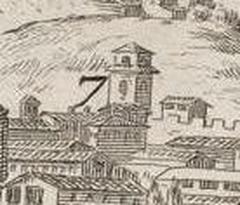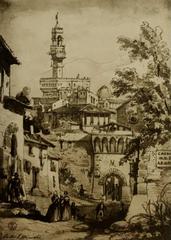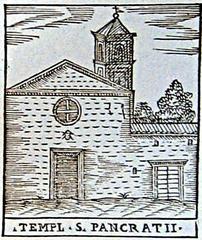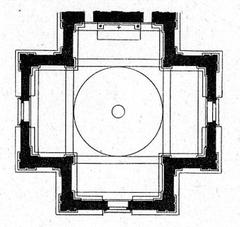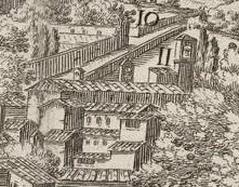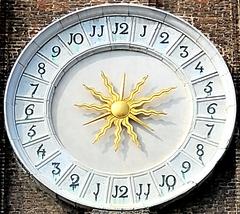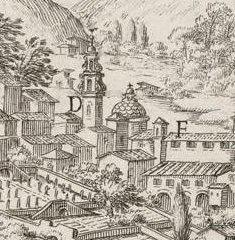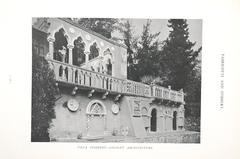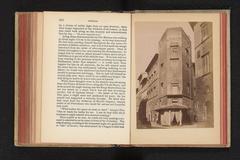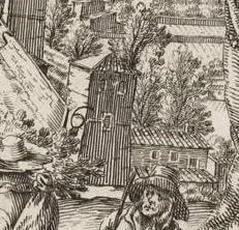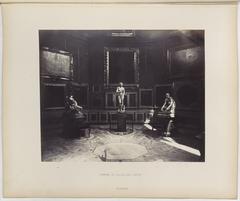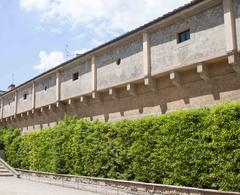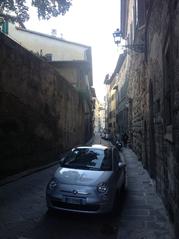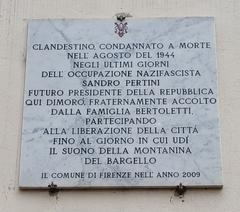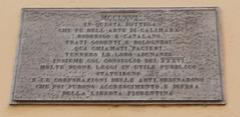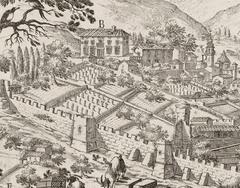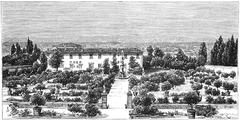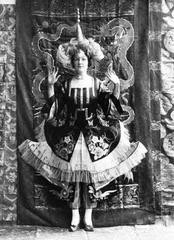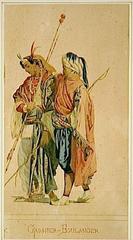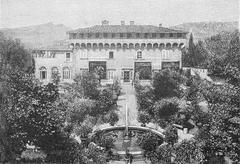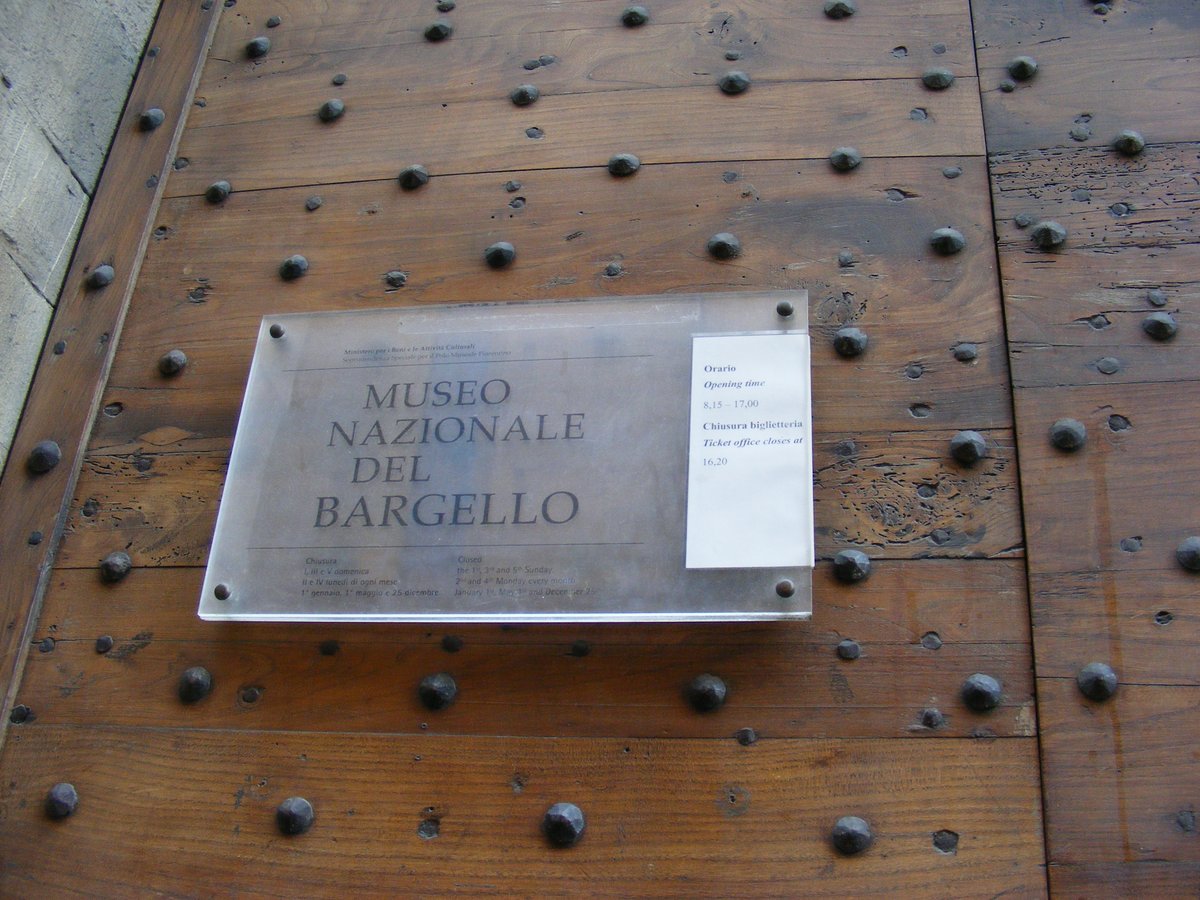
A Comprehensive Guide to Visiting the Palazzo del Bargello, Florence, Italy
Date: 18/07/2024
Introduction
The Palazzo del Bargello, located in the heart of Florence, Italy, is a monumental edifice that stands as a testament to the city’s rich and tumultuous history. Built in 1255, this fortress-like structure began its journey as the residence of the Capitano del Popolo and later became the seat of the Podestà, reflecting the political factionalism and civic authority of medieval Florence. Over the centuries, the Palazzo del Bargello transformed from a symbol of civic pride into a notorious prison and headquarters for the city’s chief of police under the Medici dynasty (Discover the History and Treasures of the Palazzo del Bargello in Florence). In the 19th century, the Palazzo del Bargello was revitalized as the Museo Nazionale del Bargello, housing an exceptional collection of Renaissance sculptures by renowned artists such as Donatello, Michelangelo, and Giambologna. This historical and cultural metamorphosis offers visitors an immersive journey into Florence’s artistic and political legacy, making the Bargello a must-visit destination for art and history enthusiasts alike.
Table of Contents
- Discover the History and Treasures of the Palazzo del Bargello in Florence
- From Medieval Might to Civic Authority - The Palazzo’s Early Years
- A Dark Turn - The Bargello as a Symbol of Repression
- Renaissance Rebirth - From Prison to National Museum
- A Treasure Trove of Sculpture - The Bargello’s Artistic Legacy
- Visitor Information - Palazzo del Bargello Tickets and Hours
- Nearby Attractions and Travel Tips
- The Bargello Today - A Cultural Icon and Architectural Marvel
- Explore the Architectural Splendor and Visiting Hours of Palazzo del Bargello in Florence
- A Fortified Palace - Echoes of Medieval Florence
- Courtyard and Well - Tranquility Amidst Strength
- The Bargello Tower - A Silent Guardian
- From Palace to Prison - A Transformation Through Time
- Renaissance Masterpieces - A Museum is Born
- Visiting the Bargello - A Journey Through Time
- Practical Information for Visitors
- Special Events and Guided Tours
- Photographic Spots
- Exploring the Bargello Museum - Visiting Hours, Tickets, and Artistic Treasures in Florence
Discover the History and Treasures of the Palazzo del Bargello in Florence
The Palazzo del Bargello, a stern yet captivating edifice in the heart of Florence, stands as a testament to the city’s tumultuous past and enduring artistic spirit. Its journey from a forbidding fortress to a revered art museum is a captivating narrative interwoven with power struggles, artistic patronage, and the ebb and flow of Florentine history. This article will guide you through the history, visiting information, and travel tips for exploring this iconic site.
From Medieval Might to Civic Authority - The Palazzo’s Early Years
The Palazzo del Bargello’s story begins in the mid-13th century, a period marked by intense political factionalism in Florence. Erected in 1255, the building served as the seat of the Capitano del Popolo, the people’s representative, symbolizing the burgeoning power of the citizenry against the city’s aristocratic elite.
The building’s austere façade, with its imposing tower and fortress-like solidity, reflects this early function. It was a visible reminder of the people’s authority, a stark contrast to the opulent palazzi of the wealthy families.
However, the Palazzo’s role was not limited to civic administration. It also housed the Podestà, a magistrate often brought in from other cities to ensure impartial justice. This dual function, reflecting the delicate balance of power in medieval Florence, contributed to the building’s evolving architectural fabric.
A Dark Turn - The Bargello as a Symbol of Repression
The 14th century witnessed a shift in the Palazzo’s purpose, mirroring the changing political landscape of Florence. With the rise of the Medici family and their growing dominance over the city, the Palazzo del Bargello took on a more sinister role.
It became the headquarters of the Bargello, the chief of police, and housed the city’s infamous prisons. The building’s name, “Bargello,” became synonymous with this period of repression, a chilling reminder of the Medici’s iron grip on power.
For nearly three centuries, the Palazzo witnessed countless trials, imprisonments, and even executions. Its courtyard, once a symbol of civic pride, became a place of dread. The building’s architecture, with its thick walls and barred windows, served as a grim reminder of the consequences of defying the ruling elite.
Renaissance Rebirth - From Prison to National Museum
The 19th century ushered in a new era for the Palazzo del Bargello. With the demise of the Medici dynasty and the rise of Italian nationalism, the building underwent a dramatic transformation. No longer a symbol of oppression, it was chosen to house the newly established National Museum (Museo Nazionale del Bargello) in 1865.
This decision marked a turning point in the Palazzo’s history. It shed its grim past and embraced a new identity as a repository of Italian art and culture. The building’s spacious halls and former cells, once echoing with the despair of prisoners, were repurposed to showcase the artistic brilliance of the Renaissance.
A Treasure Trove of Sculpture - The Bargello’s Artistic Legacy
Today, the Palazzo del Bargello stands as one of Florence’s most important museums, renowned for its exceptional collection of Renaissance sculpture. Its holdings represent a who’s who of artistic giants, including Donatello, Michelangelo, and Giambologna, offering visitors an unparalleled glimpse into the creative fervor of the period.
Among the museum’s most celebrated masterpieces are Donatello’s bronze David, a groundbreaking work that redefined male nude sculpture, and his dynamic St. George, a powerful embodiment of courage and faith. Michelangelo’s early works, including the poignant Bacchus and the iconic Pitti Tondo, showcase the nascent genius of the young artist.
The Bargello’s collection extends beyond these iconic figures, encompassing a diverse range of sculptures, majolica ceramics, and Renaissance artifacts. The museum’s carefully curated displays offer a comprehensive overview of Florentine artistic development, highlighting the evolution of styles, techniques, and themes.
Visitor Information - Palazzo del Bargello Tickets and Hours
The Palazzo del Bargello is open to visitors throughout the week, with specific hours varying by season. Generally, the museum operates from 8:15 AM to 1:50 PM, but it’s advisable to check the official website for the most up-to-date information on visiting hours.
Ticket prices are also subject to change, with discounts available for students, seniors, and groups. Purchasing tickets in advance online can help you avoid long lines and ensure a smooth visit.
Nearby Attractions and Travel Tips
The Palazzo del Bargello is conveniently located near several other historical sites and attractions in Florence. Nearby, you’ll find the Uffizi Gallery, the Florence Cathedral (Duomo), and the Ponte Vecchio, making it easy to plan a comprehensive day of sightseeing.
When visiting, consider taking a guided tour to gain deeper insights into the history and art housed within the Bargello. Additionally, the museum’s courtyard and architectural features offer excellent opportunities for photography, so be sure to bring a camera.
The Bargello Today - A Cultural Icon and Architectural Marvel
The Palazzo del Bargello stands today as a captivating fusion of history and art. Its austere exterior, a reminder of its turbulent past, belies the artistic treasures housed within. The building’s architectural evolution, from medieval fortress to Renaissance prison to esteemed museum, reflects the dynamic forces that have shaped Florence over centuries.
A visit to the Bargello is not merely a journey through art history; it’s an immersive experience that transports visitors back in time. Walking through its halls, one can almost hear the echoes of political intrigue, artistic passion, and the human stories that have unfolded within its walls. The Palazzo del Bargello, a silent witness to Florence’s rich tapestry of history, continues to captivate and inspire visitors from around the globe.
Explore the Architectural Splendor and Visiting Hours of Palazzo del Bargello in Florence
The Palazzo del Bargello, a stern and imposing fortress-like structure, stands as a testament to Florence’s tumultuous past and enduring artistic spirit. Its architectural evolution, from a 13th-century palace of justice to a museum housing masterpieces of Renaissance sculpture, offers a captivating glimpse into the city’s rich history.
A Fortified Palace - Echoes of Medieval Florence
The Palazzo del Bargello’s origins date back to 1255, making it one of the oldest public buildings in Florence. Constructed as the residence of the Capitano del Popolo, the people’s representative, it later served as the seat of the Podestà, the highest magistrate in medieval Florence. The building’s initial design reflected its function as a symbol of authority and power.
The austere façade, characterized by its fortress-like appearance with small, high windows and a crenellated tower, speaks volumes about the turbulent political climate of 13th-century Florence. The use of rough-hewn stone, known as pietra forte, further emphasizes the building’s defensive nature. This robust material, quarried locally, was a common feature in Florentine architecture during this period.
Courtyard and Well - Tranquility Amidst Strength
Stepping inside the Palazzo del Bargello, visitors are greeted by a spacious internal courtyard, a stark contrast to the building’s severe exterior. This open-air space, surrounded by a two-tiered loggia, exudes a sense of tranquility and order. The courtyard’s design, typical of Florentine palazzi, served as a gathering place and a source of light and ventilation.
The courtyard’s centerpiece is a well, a vital source of water in medieval times. This well, adorned with a 16th-century wellhead, serves as a reminder of the building’s practical functions beyond its imposing façade. The interplay of light and shadow, created by the surrounding loggia, casts intricate patterns on the courtyard floor, adding to the space’s visual appeal.
The Bargello Tower - A Silent Guardian
Dominating the Palazzo del Bargello’s skyline is its imposing tower, known as the Volognana Tower. This 57-meter-tall structure, added in the 14th century, served as a watchtower and a prison. The tower’s height provided a commanding view of the city, allowing guards to spot potential threats from afar.
The Volognana Tower’s architecture reflects its dual purpose. The lower section, with its thick walls and narrow openings, served as a prison, while the upper section, featuring larger windows and a crenellated parapet, provided a vantage point for surveillance. Today, the tower offers visitors panoramic views of Florence, showcasing the city’s iconic skyline with its red-tiled roofs and majestic domes.
From Palace to Prison - A Transformation Through Time
Over the centuries, the Palazzo del Bargello underwent several transformations, reflecting the changing political landscape of Florence. In the 16th century, under the rule of the Medici family, the palace was converted into a prison and the headquarters of the Bargello, the city’s chief of police. This marked a significant shift in the building’s function, from a symbol of civic pride to a place of confinement.
The building’s architecture underwent modifications to accommodate its new purpose. Iron bars were added to windows, and cells were constructed within the palace walls. Despite these changes, the Palazzo del Bargello retained its imposing presence, serving as a reminder of the Medici’s firm grip on power.
Renaissance Masterpieces - A Museum is Born
In the mid-19th century, the Palazzo del Bargello embarked on its most recent transformation, becoming the Bargello Museum. This decision marked a turning point in the building’s history, preserving its architectural legacy while providing a fitting setting for a remarkable collection of Renaissance sculpture.
The museum’s collection, housed within the palace’s grand halls and intimate chambers, includes masterpieces by Donatello, Michelangelo, and Verrocchio, among others. The building’s architectural features, once symbols of power and confinement, now serve as a backdrop for some of the finest examples of Italian Renaissance art.
Visiting the Bargello - A Journey Through Time
Exploring the Palazzo del Bargello is akin to taking a journey through time. Its architectural splendor, a blend of medieval austerity and Renaissance elegance, offers a tangible connection to Florence’s rich past. The building’s evolution, from a fortified palace to a museum, reflects the city’s enduring spirit and its ability to adapt and transform.
Practical Information for Visitors
Palazzo del Bargello Visiting Hours
The Palazzo del Bargello is open to visitors daily, with varying hours depending on the season. Typically, visiting hours are from 8:15 AM to 1:50 PM, but it is recommended to check the official website for the most up-to-date information.
Palazzo del Bargello Tickets
Tickets can be purchased at the entrance or online through the official website. Prices for adults are around €8, with reduced prices available for students and seniors. Children under 18 years old typically enter for free.
Accessibility
The museum is partially accessible to visitors with mobility impairments. There are ramps and elevators in place, but some areas may be challenging to navigate. It is advisable to contact the museum in advance for detailed accessibility information.
Travel Tips and Nearby Attractions
The Palazzo del Bargello is centrally located in Florence, making it easily accessible by foot from other major attractions such as the Uffizi Gallery, the Duomo, and Ponte Vecchio. Consider combining your visit with nearby historical sites for a comprehensive experience of Florence’s rich cultural heritage.
Special Events and Guided Tours
The museum frequently hosts special exhibitions and events, which provide deeper insights into specific aspects of Renaissance art and history. Guided tours are available and can be booked in advance, offering a more immersive experience with expert commentary.
Photographic Spots
The Palazzo del Bargello offers numerous photographic opportunities. The internal courtyard, with its interplay of light and shadow, is particularly photogenic. The Volognana Tower provides a panoramic view of Florence, perfect for capturing the city’s iconic skyline.
Exploring the Bargello Museum - Visiting Hours, Tickets, and Artistic Treasures in Florence
The Palazzo del Bargello houses a diverse and significant collection of sculptures and decorative arts, primarily spanning from the 14th to the 17th centuries. It offers a captivating journey through the evolution of Italian art, with a particular focus on Florentine masters.
Bargello Museum History and Cultural Significance
The Bargello Museum, established in 1865, is one of Florence’s most important historical sites. Originally serving as a barracks and prison, the building itself is a masterpiece of medieval architecture. Today, it stands as a testament to Florence’s rich cultural heritage, housing some of the finest works of the Renaissance.
Visiting Hours and Tickets
- Visiting Hours: The Bargello Museum is open from 8:15 AM to 2:00 PM, Monday through Sunday. It is closed on the first, third, and fifth Monday of each month, as well as on certain holidays.
- Tickets: General admission is €8, with reduced prices for EU citizens aged 18-25 and free entry for children under 18 and seniors over 65. Tickets can be purchased online or at the entrance.
Sculpture
Donatello’s Masterpieces
-
David (c. 1440s): This iconic bronze statue, standing at a graceful 1.58 meters, depicts a youthful David, triumphant over the slain Goliath. Donatello’s David, unlike earlier depictions, emphasizes the human form and psychological depth, marking a pivotal moment in Renaissance sculpture (source).
-
St. George (1417): Originally commissioned for the exterior niche of Orsanmichele, this marble statue embodies the idealized image of a knightly saint. St. George’s confident stance and unwavering gaze reflect the humanist ideals of the early Renaissance (source).
-
Bronze Bust of a Young Man (c. 1460s): This enigmatic bust, believed to portray a young nobleman, showcases Donatello’s mastery of portraiture. The subject’s delicate features and introspective expression capture the essence of Renaissance humanism (source).
Michelangelo’s Early Works
-
Bacchus (c. 1496-97): One of Michelangelo’s earliest large-scale sculptures, Bacchus depicts the Roman god of wine in a state of playful intoxication. The statue’s sensuality and technical brilliance demonstrate the young artist’s burgeoning talent (source).
-
Brute (c. 1501-04): This unfinished masterpiece, carved from a single block of marble, depicts a powerful, brooding figure. The Brute’s unfinished state allows viewers to appreciate Michelangelo’s dynamic carving technique and his ability to infuse raw emotion into stone (source).
-
Tondo Pitti (c. 1503-05): This circular relief, also known as the Madonna and Child with the Infant St. John the Baptist, showcases Michelangelo’s mastery of relief sculpture. The composition’s dynamism and the figures’ expressive gestures highlight the artist’s evolving style (source).
Works by Other Renowned Sculptors
-
Benvenuto Cellini’s Perseus with the Head of Medusa (1545-54): This bronze masterpiece, commissioned by Cosimo I de’ Medici, stands as a testament to Cellini’s technical virtuosity and dramatic flair. The sculpture depicts the mythical hero Perseus holding aloft the severed head of Medusa, a symbol of triumph over evil (source).
-
Giambologna’s Mercury (1580): This dynamic bronze sculpture captures the Roman messenger god, Mercury, poised for flight. Giambologna’s mastery of anatomy and movement is evident in Mercury’s graceful pose and flowing drapery (source).
-
Andrea del Verrocchio’s Lady with a Bouquet (c. 1470s): This elegant marble bust, attributed to Verrocchio, exemplifies the refined beauty and delicate realism of Florentine portraiture during the late 15th century (source).
Decorative Arts
The Carrand Collection
The Carrand Collection, bequeathed to the Bargello in 1888, comprises a vast and diverse array of decorative arts, including:
-
Medals and Plaquettes: The collection boasts an impressive assortment of Renaissance medals and plaquettes, showcasing the intricate artistry and historical significance of these miniature masterpieces.
-
Ivories: From intricately carved diptychs to delicate statuettes, the ivory collection offers a glimpse into the luxurious world of medieval and Renaissance craftsmanship.
-
Majolica: The collection features vibrant examples of Italian majolica, a tin-glazed earthenware renowned for its colorful designs and decorative motifs.
-
Textiles: Rich tapestries, embroidered fabrics, and liturgical vestments provide insights into the opulent textiles of the Renaissance period.
The Islamic Art Collection
The Bargello houses a noteworthy collection of Islamic art, primarily acquired through the Carrand bequest. Highlights include:
-
Ceramics: Lustrous lusterware, vibrant polychrome pottery, and intricately decorated tiles showcase the diverse artistic traditions of the Islamic world.
-
Metalwork: Elaborately engraved brassware, inlaid silver objects, and intricately crafted arms and armor demonstrate the technical skill and artistry of Islamic metalworkers.
-
Textiles: Woven carpets, embroidered silks, and delicate fabrics reflect the rich textile traditions of the Islamic world.
The Arms and Armor Collection
The Bargello’s collection of arms and armor offers a fascinating glimpse into the history of warfare and weaponry. Highlights include:
-
Tournament Armor: Elaborately decorated suits of armor, designed for ceremonial tournaments, showcase the craftsmanship and pageantry of Renaissance warfare.
-
Swords and Daggers: A diverse array of swords, daggers, and other edged weapons illustrate the evolution of weaponry and the artistry of blade-making.
-
Firearms: Early examples of firearms, including matchlock muskets and wheellock pistols, provide insights into the development of gunpowder technology.
Visitor Tips
-
Allocate Sufficient Time: The Bargello’s collection is vast and diverse, so plan to spend at least 2-3 hours to fully appreciate its treasures.
-
Utilize Audio Guides or Guided Tours: Enhance your visit by opting for an audio guide or joining a guided tour to gain deeper insights into the artworks and their historical context.
-
Explore the Courtyard: Take a moment to relax and admire the Bargello’s serene courtyard, a hidden gem offering respite from the bustling city.
-
Combine Your Visit: Consider combining your visit to the Bargello with other nearby attractions, such as the Museo di Palazzo Davanzati or the Museo di San Marco, to create a comprehensive itinerary of Florentine art and history.
Nearby Attractions
-
Museo di Palazzo Davanzati: Just a short walk from the Bargello, this museum offers a glimpse into the life of a Florentine noble family during the Renaissance.
-
Museo di San Marco: Located in a former Dominican convent, this museum houses an impressive collection of works by Fra Angelico and provides insights into monastic life.
Accessibility
The Bargello Museum is committed to accessibility, offering services such as wheelchair access and guided tours for visitors with disabilities. For more information, check the official website or contact the museum directly.
Special Events and Guided Tours
The Bargello Museum frequently hosts special exhibitions, workshops, and guided tours. Check the official website for the latest information on upcoming events and activities.
Photography Spots
The Bargello offers numerous photographic opportunities. Notable spots include the serene courtyard, the grand staircase, and the various galleries showcasing stunning artworks.
FAQ
What are the Bargello Museum’s visiting hours?
The museum is open from 8:15 AM to 2:00 PM, Monday through Sunday, with closures on the first, third, and fifth Monday of each month and certain holidays.
How much do tickets cost?
General admission is €8, with reduced prices for EU citizens aged 18-25 and free entry for children under 18 and seniors over 65.
Are guided tours available?
Yes, the Bargello Museum offers guided tours and audio guides to enhance your visit.
Call to Action
Stay updated with the latest news and events from the Bargello Museum by following them on social media or downloading their official mobile app. Also, check out our other articles on Florence’s historical sites and plan your perfect itinerary!
Conclusion
Visiting the Palazzo del Bargello is not just an exploration of Florence’s artistic heritage but also a profound journey through the city’s historical evolution. From its origins as a civic fortress in the 13th century to its role as a prison under the Medici’s oppressive rule, and finally, its rebirth as a national museum, the Bargello encapsulates the dynamic forces that have shaped Florence over centuries (Discover the History and Treasures of the Palazzo del Bargello in Florence). Today, the Bargello Museum stands as a cultural icon, offering an unparalleled collection of Renaissance sculptures and decorative arts. Its impressive holdings, including masterpieces by Donatello and Michelangelo, provide a rich narrative of artistic innovation and human expression (Explore the Architectural Splendor and Visiting Hours of Palazzo del Bargello in Florence). Visitors are encouraged to delve into the museum’s vast collections, explore the serene courtyard, and take in panoramic views from the Volognana Tower. Whether you’re an art aficionado or a history buff, the Palazzo del Bargello promises a deeply enriching experience that celebrates Florence’s enduring artistic spirit and historical significance (Exploring the Bargello Museum - Visiting Hours, Tickets, and Artistic Treasures in Florence).
References
- Discover the History and Treasures of the Palazzo del Bargello in Florence, 2024, Author https://www.bargellomusei.beniculturali.it/
- Explore the Architectural Splendor and Visiting Hours of Palazzo del Bargello in Florence, 2024, Author https://www.bargellomusei.beniculturali.it/
- Exploring the Bargello Museum - Visiting Hours, Tickets, and Artistic Treasures in Florence, 2024, Author https://www.bargellomusei.beniculturali.it/
